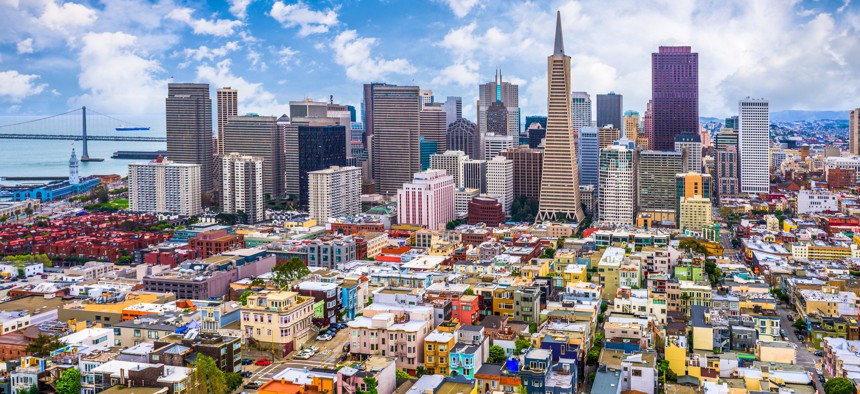Urban Heat Islands Pose ‘Extreme Public Health Risk’

Downtown San Francisco istockphoto.com/Sean Pavone
Five cities with the highest scores for heat islands, which cause a variety of health and environmental issues, are in Louisiana, New Jersey, New York, Texas and California, according to a new analysis.
Urban heat islands in cities across the country pose an “extreme public health threat,” according to an analysis by Climate Central, an independent group of scientists and journalists researching the effects of climate change. The five cities that the group said have the highest temperature scores are New Orleans, New York, Houston, San Francisco and Newark, New Jersey
Urban heat islands are hotter than their surroundings, which create a number of issues for local residents, including increased risk of respiratory illnesses, heat exhaustion, heat stroke and heat-related deaths. They also increase the energy consumption needed to air condition homes and buildings, which leads to more air pollution.
Roads, sidewalks, parking lots and buildings absorb and retain heat during the day and radiate it back into the air, according to the report. Because of this, urban neighborhoods can experience mid-afternoon temperatures that are 15°F to 20°F hotter than outlying areas that have more vegetation and less development.
The researchers wrote that urban heat islands impact certain groups more than others: “Discriminatory housing practices like redlining along with other socioeconomic factors mean that communities of color are often in areas with fewer trees and parks and thus are exposed to higher urban heat.”
In addition to health issues, very hot pavement and rooftops can heat up stormwater runoff, which drains into sewers and raises water temperatures as it flows into streams, rivers, ponds and lakes, according to the Environmental Protection Agency. Warmer water temperatures impact all aspects of aquatic life, EPA says.
Climate Central created an index to evaluate the intensity of urban heat islands and applied it to 158 U.S. cities. The researchers measured the land cover in each city and factored in building height and population density using a holistic evaluation model to estimate how urban heat island intensity varies across cities. The results show the index temperature scores ranged from less than 5°F to nearly 9°F.
Solutions That Work
There are a number of long-term solutions to lessen urban heat islands, according to the report, including:
- Planting trees, particularly along paved streets.
- Adding green roofs, or rooftop gardens, to provide shade and lower temperatures on the roof surface and surrounding air.
- Installing cool roofs made of highly reflective and emissive materials that are cooler than traditional roofing materials.
- Adding cool pavements, or whitewashing roads and sidewalks. But the report notes these are more complicated to install than green or cool roofs.
For more information about the urban heat islands report click here.
Jean Dimeo is the managing editor of Route Fifty.
NEXT STORY: Three steps to building digital resilience





